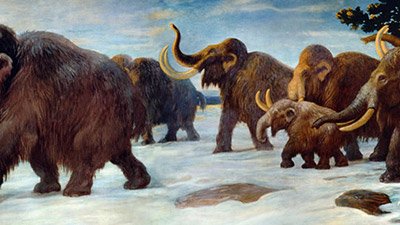
The World’s Largest Marsupial Found In Queensland
A nearly complete skeleton of the world’s biggest marsupial, the Diprotodon, was unearthed at Floraville Station in Queensland. This specimen, 6-½ feet tall and 11 feet long, is estimated to have weighed three tons.
Secular paleontologists believe Diprotodons lived in Australia between two million and 50,000 years ago, although this one has not yet been dated. These giant marsupials co-existed with people during the Pleistocene era. The cause of their extinction is a mystery, the leading candidates being climate change and over-hunting.
Other fossilized megafauna found nearby have included giant kangaroos and a big lizard called a megalania. (Megafauna are huge animals native to a particular region.) Paleontologists are hopeful the area will turn out to be a fossil graveyard containing more well-preserved specimens.
Fossils of animals unique to Australia are explained by post-Noah’s Flood catastrophes. After the global Flood animals migrated to various parts of the globe. Some species were evidently cut off after arrival, perhaps by obliteration of a land bridge. Post-Flood events such as localized catastrophic flooding explain the rapid burial and preservation of animals within their native habitats. Some Diprotodon fossils have been found in groups consistent with their sudden catastrophic demise.
The Pleistocene era’s geology, despite traditional secular dates, corresponds to the Ice Age, a time when severe climate changes in the wake of the global Flood would have affected even places not touched by glaciation.
The geology of some of Australia’s fossil graveyards—small patches of thin sedimentary outwash deposits and limestone caves filled with fossil-rich sedimentary rock—are consistent with local post-Flood catastrophes. Queensland’s famous fossil graveyard at Riversleigh is a good example. The severe climate changes which paleontologists suggest as the likely cause of megafauna extinction would likewise be expected in the post-Flood environment. The Pleistocene era’s geology, despite traditional secular dates, corresponds to the Ice Age, a time when severe climate changes in the wake of the global Flood would have affected even places not touched by glaciation.
The giant wombat-like fossil will be joining those at the Riversleigh Fossil Centre. Such fossils are a memorial to the global Flood described in Genesis.
Further Reading
- Get Answers: Fossils
For More Information: Get Answers
Remember, if you see a news story that might merit some attention, let us know about it! (Note: if the story originates from the Associated Press, FOX News, MSNBC, the New York Times, or another major national media outlet, we will most likely have already heard about it.) And thanks to all of our readers who have submitted great news tips to us. If you didn’t catch all the latest News to Know, why not take a look to see what you’ve missed?
(Please note that links will take you directly to the source. Answers in Genesis is not responsible for content on the websites to which we refer. For more information, please see our Privacy Policy.)

Answers in Genesis is an apologetics ministry, dedicated to helping Christians defend their faith and proclaim the good news of Jesus Christ.
- Customer Service 800.778.3390
- Available Monday–Friday | 9 AM–5 PM ET
- © 2025 Answers in Genesis



